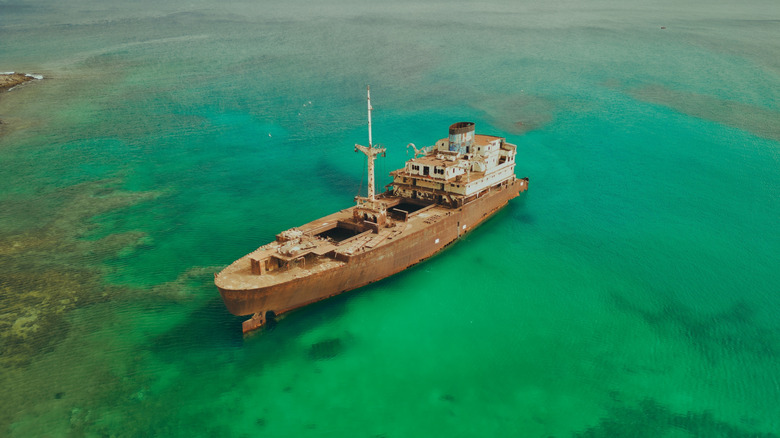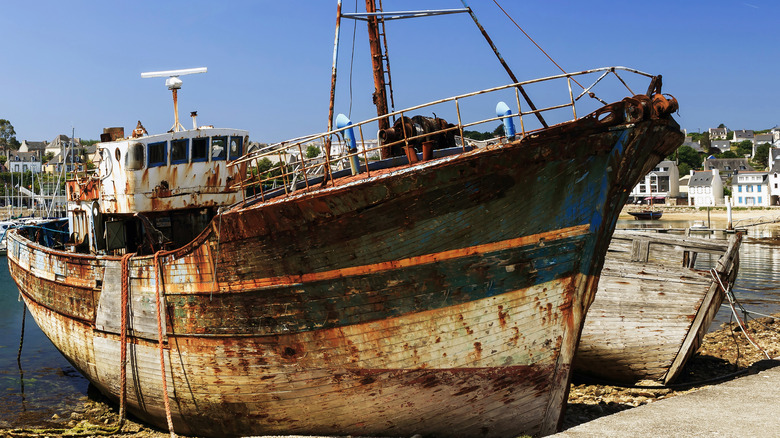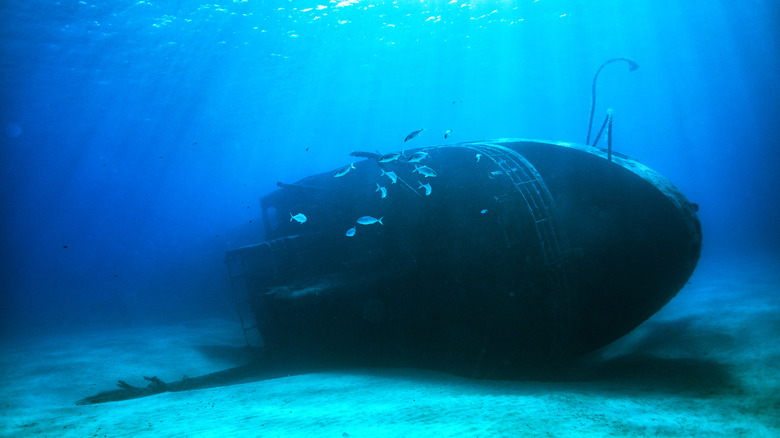Ghost Ships Are Real, And They're Haunting Us: Here's Why It's Such A Problem
When you hear the phrase "ghost ship," what comes to mind? Perhaps a waterlogged galleon, floating through an eerie mist and crewed by a host of skeletal pirates? While there are certainly plenty of folktales and myths about such ships, the term actually has a proper, real-life meaning. A ghost ship, also occasionally known as a phantom ship, refers to any vessel that's found out in the ocean without a living crew manning it. Additionally, there is no clear explanation for the vessel being abandoned, such as depleted supplies or weather damage.
Ghost ships have inspired seafaring stories for centuries, but the most disturbing thing about them isn't their relation to the supernatural. Rather, the problem is that these abandoned vessels are drifting into spots they shouldn't be, crashing into sensitive environments and endangering the flora and fauna that live there. It's a big problem from an ecological perspective, right up there with climate-induced reef bleaching, not to mention a waste of perfectly good vessels in some cases. This is why efforts have been taken to prevent the abandoning of vessels in the first place, or at the very least, recycle ghost ships for better purposes.
A ghost ship is any derelict vessel without a crew for no clear reason
Briefly, let's discuss how a ghost ship ends up abandoned because it's probably not in the way you're thinking. If you believe in folklore, a ghost ship is the result of some mysterious affliction sweeping through the crew and killing them. However, if there were some manner of illness causing this, there would be a clear indication, such as human remains. If the entire vessel is bereft of humans, living or otherwise, the only explanation is that it was abandoned deliberately.
Why would you abandon an entire vessel, though? Well, for the same reason most people abandon anything: because it doesn't work, or you don't want to pay for it anymore. Some ghost ships are the result of complete, unfixable mechanical failure, forcing its crew to take to lifeboats and leave it behind. More often than that, though, vessels are abandoned as a cost-cutting measure. Various ghost ships throughout history have been successfully tracked back to their owners, who confess to abandoning or scuttling the vessels because they couldn't afford the upkeep anymore. Docking and recycling a ship costs money as well, especially if the vessel isn't made primarily out of recyclable materials, so sometimes it's easier to just dump it somewhere.
Ghost ships sink or run aground, damaging local environments
The reason ghost ships are problematic is similar to the reason littering is problematic in general, albeit on a much larger scale. When a ship is abandoned, it's left completely to the mercy of the elements, including the waves and wind. Whether it's ultimately sunk by choppy waters or guided to a landmass, it's the same problem: that ship is going somewhere it's not supposed to be.
If you've never seen a ship sink or run aground, it's quite a massive event. The sheer weight of the vessel crashing into the seafloor or running into an island's shallows can completely destroy natural environments like reefs or marshlands, displacing their residents. In the best-case scenario, a sunken ship may become a new home for sea life, and an interesting scientific curiosity. However, depending on what the ship is made of or what it was carrying, it can also release toxic elements into its unwilling home, all but ensuring no natural life can ever return to that area and potentially endangering local human life. If the ship crashes in an odd place, it could even become a dangerous obscured obstacle for other vessels.
Efforts to prevent or recycle ghost ships have been ongoing for about as long as there's been a seafaring industry. Investigators search the remains for identifiers to link and return them to their owners, after which point the vessel either resumes operations or is scuttled. Post-World War I, the U.S. Navy used ghost ships for target practice, though that doesn't really fix the problem. In the modern age, legislators have been workshopping new rules to discourage abandonment in the first place, as well as improving recycling programs to accept more of an old ship's materials.


